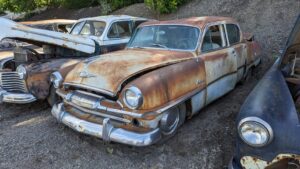Junkyard Gem: 1981 Ford Mustang Coupe
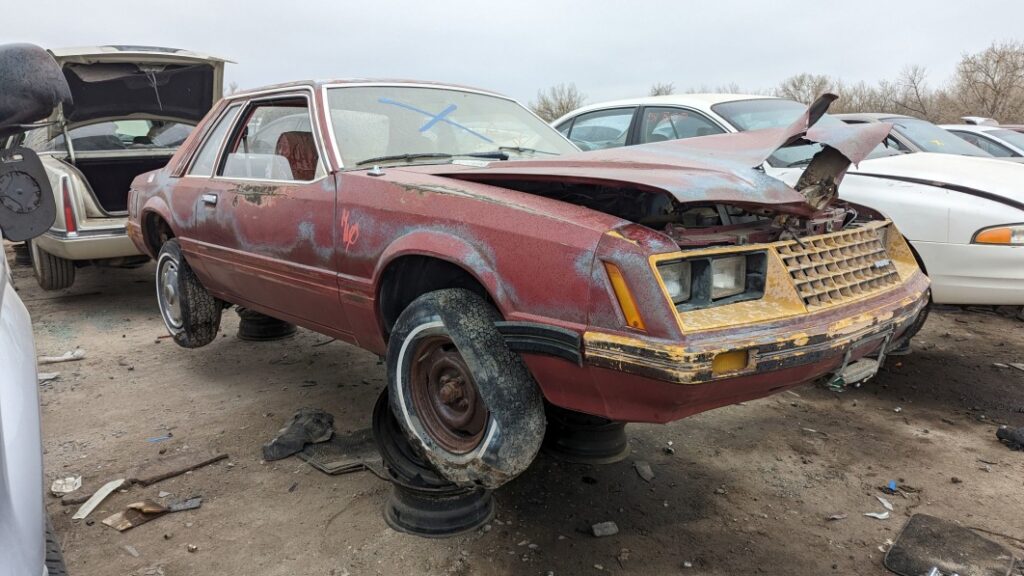
After building Mustangs on a Pinto-derived platform from the 1974 through 1978 model years, Ford moved America’s original pony car over to its new Fox platform for 1979. There it remained through 1993 (or 2004, if you believe—as I do—that the SN95 platform was still a Fox), and along the way created some of the most beloved Mustangs of all time. In the early days of the Fox Mustang, however, it wasn’t as apparent that this new horse would be so superior to its predecessor, and I’ve found one of those Late Malaise Era cars in a Denver-area boneyard recently.
The build tag (aka data plate) tells us that this car was built at the San Jose (actually in Milpitas) assembly plant in California, where the Great Mall of the Bay Area now stands. It was sold out of the Denver sales office, its exterior paint is Medium Red and its interior is red to match. Ford build tags of this era are much easier to read today than their fade-prone GM counterparts, by the way.
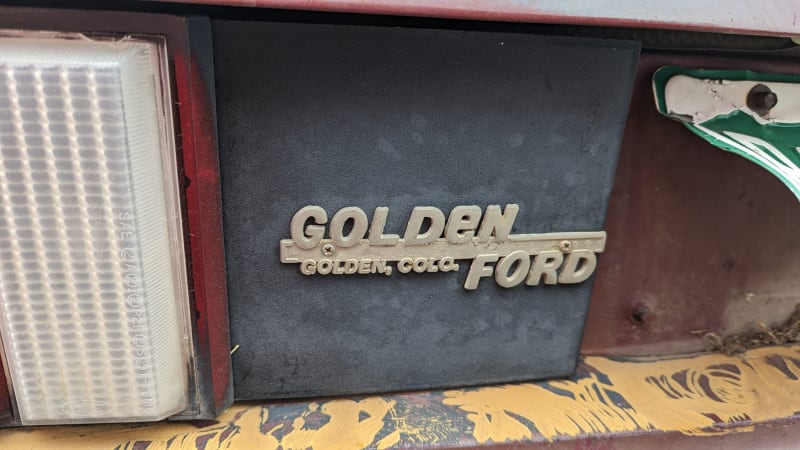
This Mustang appears to have been a lifelong Colorado resident, with an original badge from a dealership in Golden (best known as the home of Coors beer).
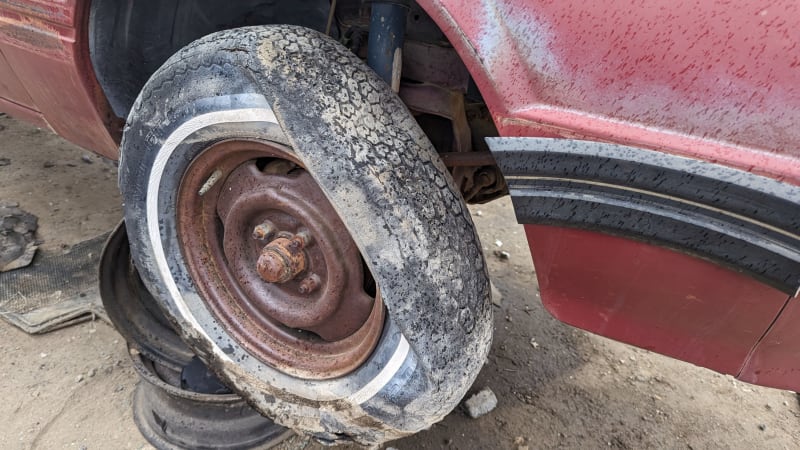
The ossified tires and nuked upholstery indicate that it was parked outside decades ago and never drove again.
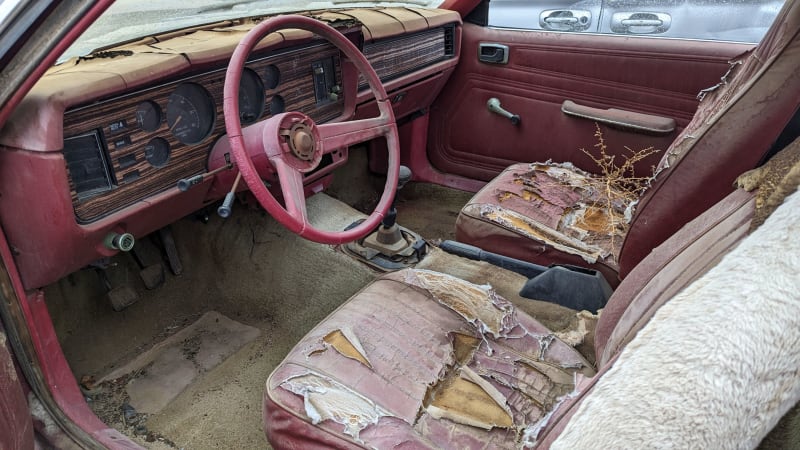
Before the High Plains sun did its work, this car might have been in fairly good cosmetic condition.
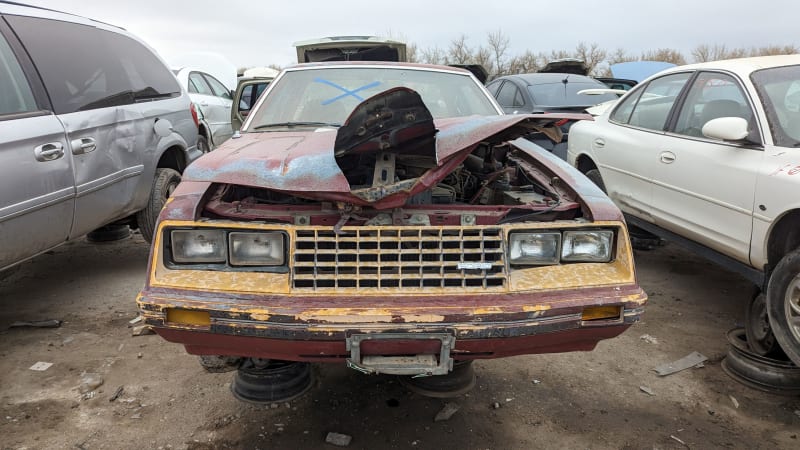
It appears that frustrated junkyard employees resorted to drastic measures to deal with a stuck hood latch.
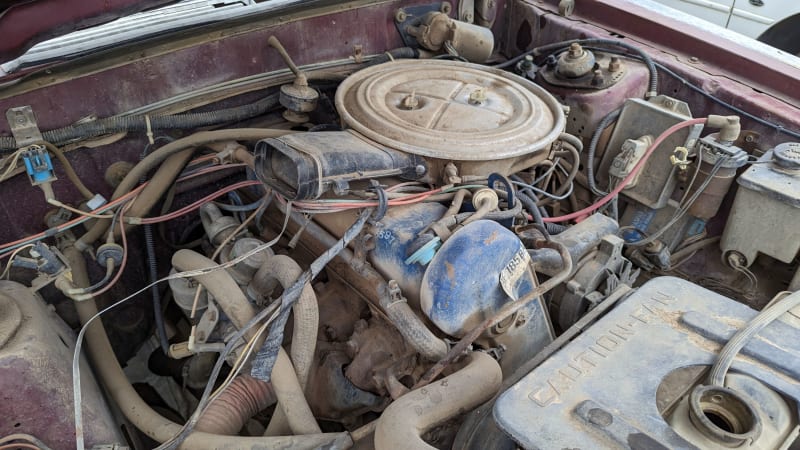
Under that mangled hood, we find the base engine for the 1981 Mustang: a 2.3-liter SOHC straight-four rated at 88 horsepower and 118 pound-feet. This engine is popularly known as “the Pinto motor,” though it was installed in everything from Rangers to Argentinean Falcons. Several optional engines were available in 1981: a turbocharged version of the 2.3 with 150 horsepower ($610 extra, or $2,116 today), a 200-cubic-inch pushrod straight-six with 94 horsepower ($213, or $739 now), and a 255-cubic-inch Windsor V8 with 115 horsepower ($263, or $912 after inflation). Those who needed to be like Vanilla Ice and roll in a 5.0 Mustang had to wait until the 302 V8 returned in 1983.
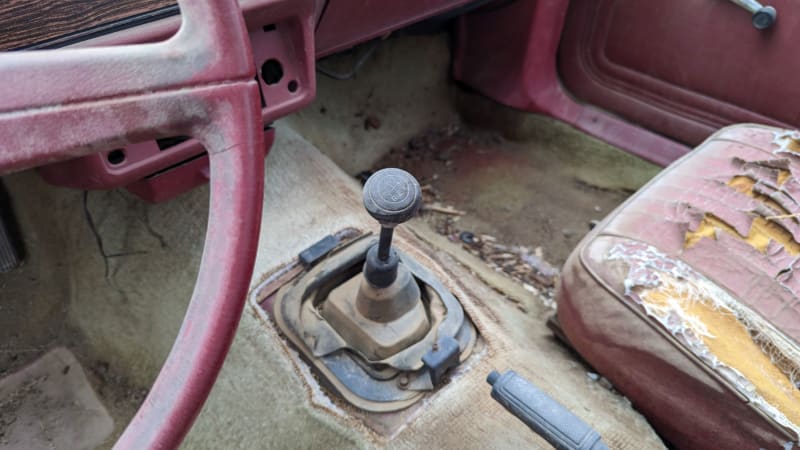
This Mustang appears to have been ordered with very few options. The transmission is a four-speed manual, because what else do you really need? If you wanted a five-on-the-floor manual, the cost was $183 ($635 in today’s money, but its overdrive top gear probably paid for itself in gas savings within a few years). Americans 42 years ago loved automatics nearly as much as they do now, but the cost was higher in a Mustang back then: $349, or around $1,211 now.
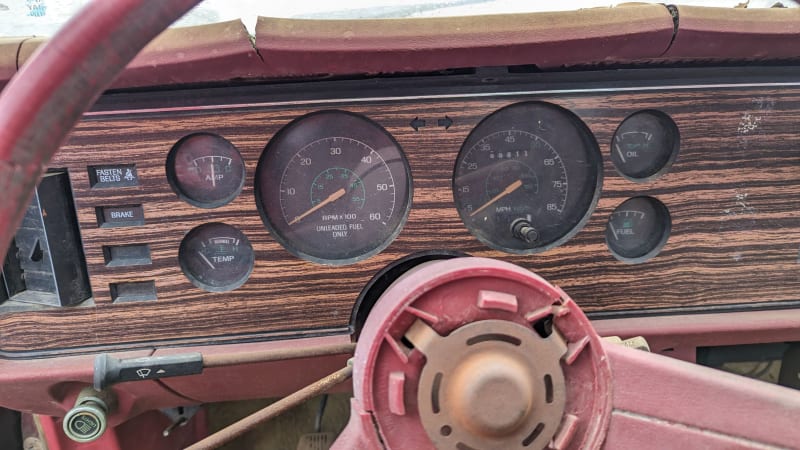
These “full-width woodtone instrument panel appliqués” were standard equipment in even the cheapest 1981 Mustangs, believe it or not.
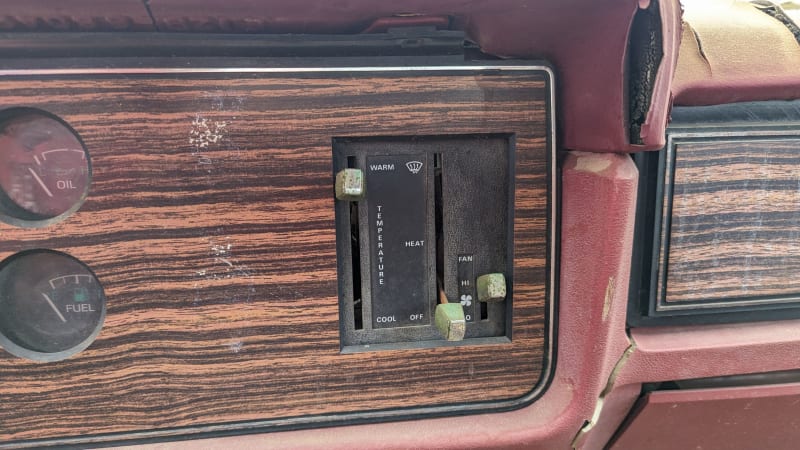
So how much was a Mustang two-door notchback with no options in 1981? $6,230, or about $21,614 after inflation. That’s a pretty good deal for a reasonably fun (for its time) and good-looking commuter car.
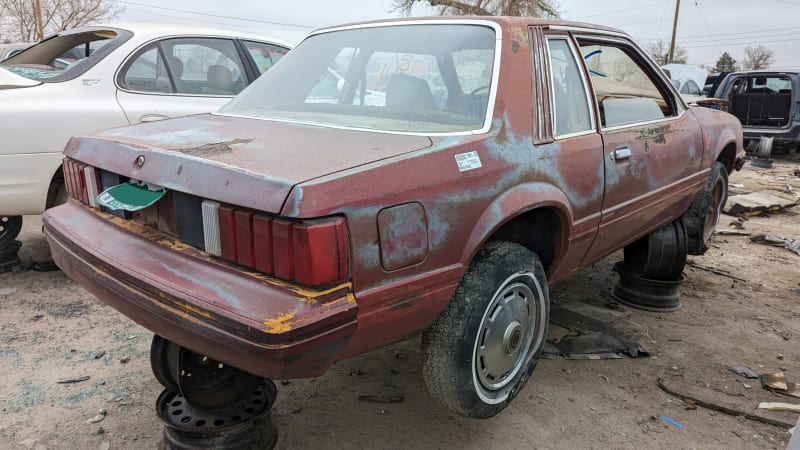
The notchbacks are a bit lighter than the hatchbacks (2,524 versus 2,544 pounds four a four-cylinder ’81 model) and they didn’t sell as well as the hatches after 1980, so they became sought-after by drag racers in later years. Most of the Fox Mustangs you’ll find in junkyards these days are hatchbacks, due to that preference.
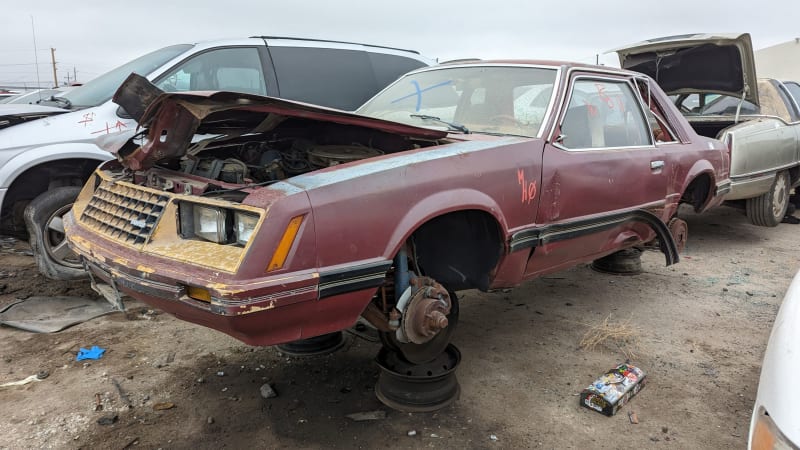
This car would have been ideal as the basis for an affordable drag-race machine stuffed with a dime-a-dozen 5.0 and some cheap off-the-shelf speed parts, in fact. I’m a little surprised that no Fox Ford fanatic rescued it before it entered the junkyard ecosystem.
Disco wasn’t fully dead by 1981, at least in the minds of Dearborn’s marketing wizards.
If you lived in California, Oregon, Washington, Alaska or Hawaii, you could get a Pacific Mustang in 1981. Mexicans and Canadians living in states or provinces on the Pacific were excluded from this deal, apparently.
A thoroughbred with a taste for the sporting life.


